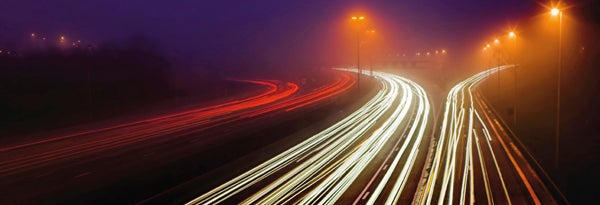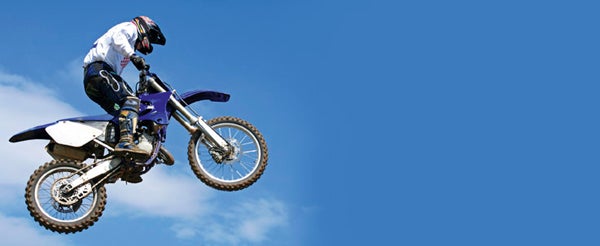Mastering Shutter Speeds: Page 2
Shutter Speeds and Lenses
The focal length of the lens you’re using is important in determining the shutter speed you use, in order to avoid camera shake. Camera shake is a motion blur effect caused by a combination of camera movement and slow shutter speed. Whenever we hand-hold a camera simply pressing the shutter can cause camera shake. It can also be affected by the length and weight of a lens.
As a rule of thumb, the slowest shutter speed you can use will have a denominator roughly the same as that of the lens focal length. In digital terms, the 35mm film equivalent focal length should be used. So a 50mm lens, with a 35mm equivalent focal length of 75mm (approximately 1.5x magnification), requires a shutter speed of 1/75sec or faster. For most users this will equate to around 1/60 to 1/125sec, depending on how many coffees you’ve had. That may sound like a joke, but in fact caffeine and other stimulants can have an effect on camera shake. Camera shake can be avoided by using a support such as a tripod, or even resting your body against a wall, or raising the cameras ISO or opening the aperture. Alternatively there are also lenses with Image Stabilisation.

Slow Shutter Speeds
Long, or slow, shutter speeds can be used to tremendous effect, but you will need to hold the camera steady. A couple of ways of doing this is by using a tripod (preferable) or merely by placing the camera on a table and changing the angle by raising the lens angle of viewpoint with books, ashtrays or whatever is to hand. A tripod or monopod is your best bet, though.
Most people have seen pictures of waterfalls with blurred water, or Piccadilly Circus with car trails. These pictures are easy to take using a combination of small apertures and long shutter speeds of one second or more, with DSLRs usually offering a range up to 30 seconds.
The best mode to shoot these types of pictures is Shutter Priority AE (S on most cameras, or Tv on Canon cameras), which allows you to set the shutter speed, while the camera decides the appropriate aperture.
If there are a lot of highlights in the shot (for example, the neon signs of Piccadilly), then make sure to meter carefully. If in doubt, take several shots at different apertures, which is otherwise known as bracketing.

Fast Shutter Speeds
The reciprocal effect of aperture and shutter means that as you open the aperture, the shutter time gets shorter, or the ‘speed’ becomes ‘faster’. For average, everyday shooting with standard zooms a speed over 1/60 to 1/125sec will prevent camera shake, and for everyday situations, the upward speeds from there generally have little effect on your pictures. However, as the shutter speed goes past 1/500sec, you can really start to take advantage of the faster shutter speeds’ ability to ‘freeze’ action. Entry level to mid level DSLRs offer a maximum shutter speed of about 1/4000sec, while the Pro cameras such as the Nikon D2X offer speeds as high as 1/8000sec. For high-speed photography this is really useful, as well as sports photography where you really need to catch the detail of Lewis Hamilton’s McLaren. Of course, this also requires either wide apertures, bright lighting conditions or an adjustment to the cameras ISO speed – or a combination of all three to make using these speeds possible.




